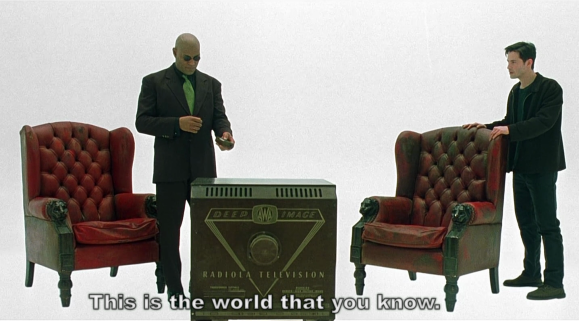Tags
ar, arvr, assistive technology, ECI 833, eci833, edtech, gamification, virtual reality, vr
Augmented and Virtual Reality (AR/VR)!
First off, thanks to Bill for being a great presenting partner. I thought our teaching styles complimented each other very well.
Next, I wanted to provide something new to the #ECI833 readers than what we had presented about… and that is my experiences and subsequent beliefs, biases and views towards AR/VR. And for those of you coming in with pre-existing notions about the “uselessness of gaming” (yeah, you, Jayme. Your husband’s a good guy!), I got a class devoted to game creation and gaming’s power for learning that would beg to disagree!
My experience with AR/VR
AR
A student was playing Ingress (an AR game) in my class last year after completing his work and, prior to reminding him he still had more work to do, I listened to him mention that the company that made this was planning on making a Pokemon game… since I was partially raised in the region of Kanto (this is a location in the original Pokemon Red, Blue, and Yellow games), I patiently waited.

Pokemon GO via MobiPicker
My wait was almost rewarded as the official release of the game was in summer 2016… in the United States… still unavailable to the Canadian public. Fortunately, I had an AP Conference in Anaheim, CA. Let the Pokemon catching begin. The young Logan was ALIVE and, surprisingly, with the augmented reality, viewing my surroundings with creatures of my childhood, I soon connected with strangers and with my environment. Adults. Youth. Men. Women. I met and talked with strangers, I learned about locations in and around Anaheim, and I had fun. I was engaged. Interesting.
VR
I had never tried out a VR device prior to this class. After registering to present about it (mostly out of post-Pokemon GO excitement), I mentioned it to my father, and he conveniently picked up a Playstation VR (for himself, not me, for the record) on sale three weeks prior to our presentation. He told me I needed to come over to try Batman Arkham. Several days later, I did…
And?
Shut.
the.
front.
door.
It was incredible.
I! WAS! BATMAN! I PUT ON THE BAT SUIT, GAUNTLETS, TESTED OUT THE BATARANG, AND I HUNG OUT WITH ALFRED!
There I was in downtown Gotham City, analyzing a crime scene, yet simply doing 360’s in my basement looking around desperately for clues to solve a murder. I searched a morgue to locate a key, problem-solved using tips and inferences from the environment I was in. I was learning in a game. It was more than I’d ever felt playing a game before. My legs responded to the environment as my brain accepted what my sight and hearing had presented as real. (If you have an opportunity to try it, do it!)
Learning Implications of AR/VR
Then the implications came, and I was almost overcome with emotion. Perhaps place-based learning in a Saskatchewan classroom is possible for more than four months of the school year… this could change my environmental science 20 class!
Virtual tours. Simulation of activities re-imagined. Pseudo-hands on experience/training. Distance learning 3.0. Assistive technologies?! Imagine therapeutic treatments made possible with Virtual Reality… or transcending our mortal lives to exist as a series of light, sound and code for loved ones to reconnect…
A New Reality
But it’s not reality… or is it? If it’s not reality… is that okay?
I would be inclined to argue that reality is subject to what we make of it… a virtual reality, though digital, is still reality nonetheless. Are we ignorant to accept it as real or toy with our brains to escape reality? We have built other devices to better observe reality (telescopes, glasses), why is this different?

Morpheus via Pinterest
What is real? How do you define ‘real’? If you’re talking about what you can feel, what you can smell, what you can taste and see, then ‘real’ is simply electrical signals interpreted by your brain. – Morpheus, The Matrix (1999) via IMDB
At least we’re not in the matrix… or are we? At least robots aren’t simulating this reality for us… but who is? Who is creating the reality for us? Angus elaborates with detail on the potential for misinformation and personal agendas made possible through these wildly interactive realities.
Ultimately, the uses for AR/VR are whatever we can imagine and create, with some concerns of spam, privacy, . Some of it is available for free; apps like Aurasma can be used in our schools to augment the reality of your classroom. Others with more intense experiences with virtual reality headsets are available in a wide variety of styles and processing power. The industry presents a limitless potential for incredible learning. All of this predicated on the large assumption that you are wealthy enough to purchase a device that makes it possible.
So, if you can, go get a headset and immerse yourself in a whole new world. If you can’t, then, education system, let’s work on making this possible.
What are your thoughts on AR/VR? Comment below!
Logan Petlak

Hi Logan! I am still smiling after having read your post. Your enthusiasm is truly contagious. I am the furthest thing from a gamer, but I totally want to try that Batman PlayStation game. I love how you connected this post to the classroom and how it, meaning augmented reality and virtual reality, could truly take students places they could otherwise never go. I’m still working on my aurasmacom checked with my grade tens, but I believe they have bought in. I can see how hard they are working to create their auras. They are so excited to blow some teachers Minds in February when they prevent them. Thanks again for your presentation and for your great post.
LikeLiked by 1 person